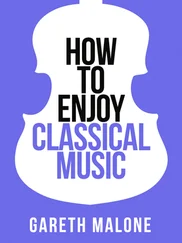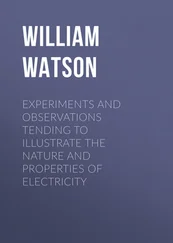Mark Changizi - Harnessed - How Language and Music Mimicked Nature and Transformed Ape to Man
Здесь есть возможность читать онлайн «Mark Changizi - Harnessed - How Language and Music Mimicked Nature and Transformed Ape to Man» весь текст электронной книги совершенно бесплатно (целиком полную версию без сокращений). В некоторых случаях можно слушать аудио, скачать через торрент в формате fb2 и присутствует краткое содержание. Год выпуска: 2011, Издательство: Perseus Books Group, Жанр: Старинная литература, на английском языке. Описание произведения, (предисловие) а так же отзывы посетителей доступны на портале библиотеки ЛибКат.
- Название:Harnessed: How Language and Music Mimicked Nature and Transformed Ape to Man
- Автор:
- Издательство:Perseus Books Group
- Жанр:
- Год:2011
- ISBN:нет данных
- Рейтинг книги:5 / 5. Голосов: 1
-
Избранное:Добавить в избранное
- Отзывы:
-
Ваша оценка:
- 100
- 1
- 2
- 3
- 4
- 5
Harnessed: How Language and Music Mimicked Nature and Transformed Ape to Man: краткое содержание, описание и аннотация
Предлагаем к чтению аннотацию, описание, краткое содержание или предисловие (зависит от того, что написал сам автор книги «Harnessed: How Language and Music Mimicked Nature and Transformed Ape to Man»). Если вы не нашли необходимую информацию о книге — напишите в комментариях, мы постараемся отыскать её.
Harnessed: How Language and Music Mimicked Nature and Transformed Ape to Man — читать онлайн бесплатно полную книгу (весь текст) целиком
Ниже представлен текст книги, разбитый по страницам. Система сохранения места последней прочитанной страницы, позволяет с удобством читать онлайн бесплатно книгу «Harnessed: How Language and Music Mimicked Nature and Transformed Ape to Man», без необходимости каждый раз заново искать на чём Вы остановились. Поставьте закладку, и сможете в любой момент перейти на страницу, на которой закончили чтение.
Интервал:
Закладка:
Music is not only missing the phonological core of speech, but it is also missing another fundamental aspect of speech, its most evocative aspect: the meaning, or semantics. If music has its source in speech, and is evocative because of the evocative nature of speech, then why wouldn’t music require words with meaning, whether metaphorical or direct? Yet, as mentioned above, neither phonology nor words is an essential ingredient of music. (Although phonology and words are key ingredients in poetry.)
If music comes from speech, then it doesn’t come from the phonological patterns of speech, or from the semantics of speech. Although these core functions of speech are dead ends for a theory of music, there is another aspect of speech I have purposely glossed over. People overlay the sterile solid-object event sounds of speech with emotional overtones. We add intonation, a pitchlike property. We vary the emphasis of the words in a sentence, reminiscent of the way rhythm bestows emphasis in music (for instance, the first beat in a measure usually has enhanced emphasis). We vary the timing of the word utterances, akin to the temporal patterns of rhythm in music. And we sometimes modulate the overall loudness of our voices, like a musical crescendo or diminuendo. These prosody-related emotional overtones turn Stephen Hawking computer-voice speech into regular human speech. And these emotional overtones can be understood even in foreign speech, where our ears can often recognize the glib, the mournful, the proud, and the angry. We’re just not sure what they are glib, mournful, proud, or angry about .
So it is not quite true that speech sounds are sterile. Rather, it is the phonological solid-object event sounds that are sterile. The overtones of speech, on the other hand, are dripping with human emotion. Might these overtones underlie music? In an effort to answer, let’s discuss the four questions at the heart of any theory of music, the ones I referred to earlier as “brain,” “emotion,” “dance,” and “structure.”
Do we have a brain for the overtones of speech? An overtone theory of music would like to say that music “works” on our brains because it taps into speech overtone recognition mechanisms. Are we likely to have neural mechanisms for recognizing overtones of speech? Although I am suggesting in this book that we did not evolve to possess speech recognition mechanisms, we primates have been making nonspeech vocalizations (cries, laughs, shrieks, growls, moans, sighs, and so on) for tens of millions of years, and surely we have evolved neural mechanisms to recognize them. Perhaps the overtones of speech come from our ancient nonspeech vocalizations, and they get laid on top of the solid-object physical event sounds of speech like a whipped cream of evocativeness, a whipped cream our auditory system knows how to taste. An overtone-based theory of music, then, does have a plausible story to tell about why our brain would be highly efficient at recognizing overtones.
Can overtones potentially explain the evocativeness of music, the second hurdle we had discussed for any theory of music? Of course! Overtones are emotional , used in vocalization to be evocative. If music mimics emotional overtones, then it is easy to grasp how music can be evocative.
Can an overtone theory of music explain dance, the third hurdle I mentioned earlier? One can see how the emotional nonspeech vocalization of other people around us might provoke us into action of some kind—that’s probably why people are vocalizing in the first place. That’s a start. But we would like to know why hearing overtones would not just tend to provoke us to do stuff, but more specifically, make us move in a time-locked fashion to the emotional vocalizations. I have not been able to fathom any overtone-related story that could explain this, and the absence of any potential connection to dance is a hurdle that an overtone theory stumbles over.
Finally, can overtones explain the structure of music? Do the overtones of speech possess the patterns of pitch, loudness, and rhythm found in music? There is, at least, enough structure floating around in the prosody of speech that one can imagine it might be rich enough to help explain the structure found in music. But despite the nice confluence between ingredients in the overtones of speech and certain similar ingredients in music, overtones appear to be a very different beast from music. First and foremost, what’s missing in the overtones of speech is a beat , and a rhythm time-locked to a beat. That’s the one thing the lub-dub theory of music captured, but it is one of the most glaring shortcomings of overtone-based approaches, and it ultimately takes overtones of speech out of the running as a basis for a theory of music.
Before leaving speech for more fertile grounds—in fact, the next section is about sex—consider the two hurdles where overtones appeared promising: “brain” and “emotion.” I suggested earlier in this section that overtones could rely on ancient human nonlinguistic vocalizations, but there is another potential foundation for overtones’ evocative nature: the sounds of people moving. Rather than music coming from the overtones of speech, perhaps both music and overtones have their foundation in the more fundamentally meaningful sound patterns of humans’ expressive movements. (And perhaps this is the source of the intersections between music and speech in the brain discerned by Aniruddh D. Patel of the Neurosciences Institute in La Jolla, and other researchers.)
How About Sex?
Music does not appear to have its origins in the beating heart or in the overtones of speech. That’s where I stood on the problem as recently as 2007, when I had recently left Caltech for RPI. I was confident that music was not lub-dubs or speech, but I had no idea what music could be. I did, however, have a good idea of some severe constraints any theory of music must satisfy, namely the four hurdles we discussed earlier: brain, emotion, dance, and structure. After racking my brain for some months, and perhaps helped along by the fact that my wife was several months delayed in following me across country to my new job, it struck me: how about sex?
Reputable scientific articles—or perhaps I saw this in one of the women’s magazines on my wife’s bedside table—indicate that to have sex successfully, satisfying both partners and (if so desired) optimizing the chances of conception, the couple’s movements should be in sync with each other. Accordingly, one might imagine that we have been selected to respond to the rhythmic sex sounds of our partner by feeling the urge to match our own movement to his or hers. Evolution would select against people who did not “dance” upon hearing sex moves, and it would also select against people who responded with the sex dance every time a handshake was sufficiently vigorous. The auditory system would thus come to possess mechanisms for accurately detecting the sexual sounds of our partner. A “sex theory of music” of this kind has, then, a story for the “brain” hurdle.
In addition to satisfying the “brain” hurdle, the sex theory also has the beginnings of stories for the other three hurdles. Emotion? Sex concerns hot, steamy bodies, which is, ahem, evocative. Dance? The sex theory explains why we would feel compelled to move to the beat, thereby potentially addressing the “dance” hurdle. (In fact, perhaps the “sex theory” could explain why dance moves are so often packed with sexual overtones.) And, finally, structure? The sounds of sex often have a beat, the most essential structural feature of music a theory needs to explain.
I was on a roll! But before getting Hugh Hefner on the phone to go over the implications, I needed to figure out how to test the hypothesis. That’s simple, I thought. If music sounds like sex, then we should find the signature sounds of sex in music. The question then became, what are the signature sounds of sex? What I needed was to collect data from pornography. That, however, would surely land me in a heap of trouble of one kind or another, so I went with the next best thing: anthropology. I began searching for studies of human sexual intercourse, and in particular for “scores” notating the behavior and vocalizations of couples in the act. I also found scores of this kind for nonhuman primates—not my bag—which, I discovered, contain noticeably more instances of “biting” and “baring teeth” than most human encounters. My hope was to find enough of these so that I could compile an average “score” for a sexual encounter, and use it as a predictor of the length, tempo, pitch modulation, loudness modulation, and rhythm modulation of music.
Читать дальшеИнтервал:
Закладка:
Похожие книги на «Harnessed: How Language and Music Mimicked Nature and Transformed Ape to Man»
Представляем Вашему вниманию похожие книги на «Harnessed: How Language and Music Mimicked Nature and Transformed Ape to Man» списком для выбора. Мы отобрали схожую по названию и смыслу литературу в надежде предоставить читателям больше вариантов отыскать новые, интересные, ещё непрочитанные произведения.
Обсуждение, отзывы о книге «Harnessed: How Language and Music Mimicked Nature and Transformed Ape to Man» и просто собственные мнения читателей. Оставьте ваши комментарии, напишите, что Вы думаете о произведении, его смысле или главных героях. Укажите что конкретно понравилось, а что нет, и почему Вы так считаете.












